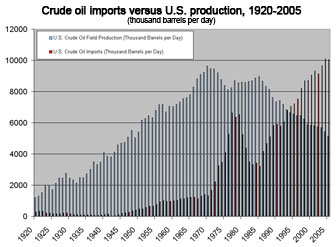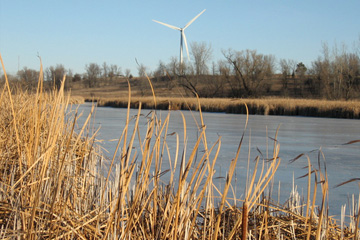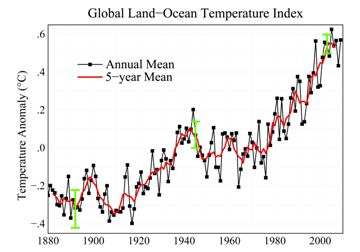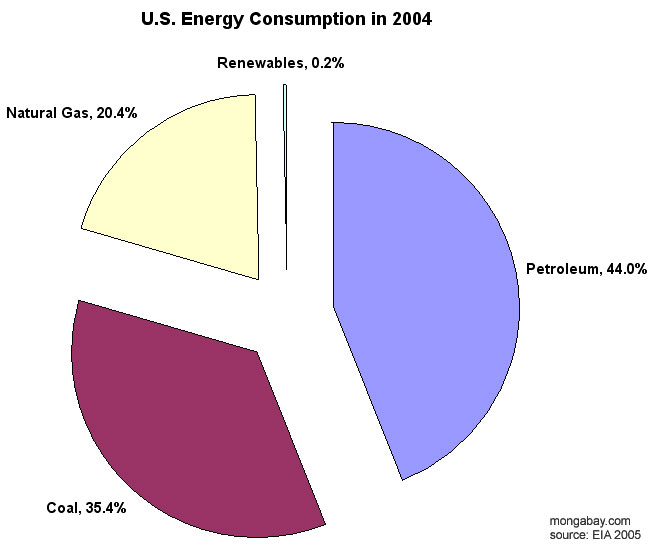Recent studies point to the feasibility of a global clean energy revolution.
Last night US President Barack Obama called for a massive green energy make-over of the world’s largest economy. Describing the challenge as ‘this generation’s Sputnik moment’ the US president set a goal of producing 80 percent of America’s energy by clean sources by 2035. While this may sound improbable, two recent analyses back the president up, arguing that a global clean energy revolution is entirely possible within a few decades using contemporary technology and without breaking the bank.
“Based on our findings, there are no technological or economic barriers to converting the entire world to clean, renewable energy sources,” Mark Z. Jacobson, a professor of civil and environmental engineering at Stanford said in a press release. “It is a question of whether we have the societal and political will.”
Political will has been difficult to come by, especially in the US where comprehensive climate legislation failed to pass last year, and the nation still refuses to sign on to the Kyoto Treaty, although it has become a more proactive participant in international negotiation under the Obama Administration.

Graph showing domestic crude production versus crude oil imports, thousand barrels per day – 1920-2005. Source: DOE/EIA. Click to enlarge. |
Yet, according to Jacobson’s paper published in Energy Policy, not just the US’s, but the entire world’s energy needs could be met by electricity produced 90% from wind and solar sources alone. The final 10% could be generated by geothermal, hydro, wave, and tidal power. Ground transportation would be run by electricity or hydrogen fuel cells, and planes would be powered by liquid hydrogen. Since electricity is far more efficient than combustion, the world would see a 30% decrease in energy demand simply by switching to electric power.
In this truly revolutionary scenario, natural gas, coal, and oil would become energy sources of the past by mid-century.
Jacobson’s timeline isn’t too different from Obama’s. The study finds that all new energy sources would be green by 2030, while all sources of energy could become green by 2050.
But what would this cost? Nay-sayers have argued for decades that it is simply too costly to switch to green energy. However, according to the researchers and a number of previous studies, the cost would not be much different than what society is paying today.
“When you actually account for all the costs to society—including medical costs—of the current fuel structure, the costs of our plan are relatively similar to what we have today,” Jacobson said who factored into the cost the lives saved—2.5 to3 million people every year—by the massive reduction in air pollution from ridding society of fossil fuels.
 Wind turbine in Morris, Minnesota, US. Photo by: Jeremy Hance. |
In order to overcome legitimate concerns about the variability of wind and solar energy, the authors say that various energy sources should be packed together.
“The most important thing is to combine renewable energy sources into a bundle,” Jacobson explains. “If you combine them as one commodity and use hydroelectric to fill in gaps, it is a lot easier to match demand. […] With a system that is 100 percent wind, water and solar, you can’t use normal methods for matching supply and demand. You have to have what people call a supergrid, with long-distance transmission and really good management.”
Finally, the study found that worries that wind and solar power would require too much land were overblown.
“Most of the land between wind turbines is available for other uses, such as pasture or farming,” Jacobson said. “The actual footprint required by wind turbines to power half the world’s energy is less than the area of Manhattan.”
Although Jacobson’s utopian vision of a green energy within a few decades may appear hard to believe, a series of studies by the UN Industrial Development Organization (UNIDO) has also found that a similar energy transformation is quite feasible, saving the world from the worst impacts of climate change.
According to the study a combination of a green energy boom, improvements in efficiency, and carbon capture and storage could meet the international community’s goal to avert the world warming over two degrees Celsius. After last year’s climate warnings—2010 witnessed a number extreme weather events linked to climate change, and saw record melting in Greenland, and tied for the hottest year on record—the UNIDO reports are an optimistic respite from increasingly grim news on the climate.
 Except for a leveling off between the 1940s and 1970s, Earth’s surface temperatures have increased since 1880. The last decade has brought the temperatures to the highest levels ever recorded. The graph shows global annual surface temperatures relative to 1951-1980 mean temperatures. As shown by the red line, long-term trends are more apparent when temperatures are averaged over a five year period. Image credit: NASA/GISS. |
According to the UNIDO studies, a green energy revolution could provide a quarter of the cuts needed by 2050, while another quarter would come from energy efficiency improvements, especially in developing nations. The rest of the emissions cuts required would then come from carbon capture and storage.
“This technology is rapidly evolving not only for power plants but also for a wide range of industrial applications,” writes the UNIDO.
In regards to cost, UNIDO agrees with Jacobson’s study that clean energy can compete with fossil fuels. However, UNIDO found one caveat.
“Renewables are not cost competitive where fossil fuels are subsidized. They are, however, already cost competitive in many cases and many countries with unsubsidized fossil fuels,” explains the UNIDO.
As of last year the world spent $500 billion on subsidies for oil, gas, and coal, which David Victor, a professor of political science with UC San Diego’s School of International Relations and Pacific Studies, at the time called mostly “a complete waste of money”.
President Obama appeared to agree last night during his State of the Union. He pledged to end subsidies to oil companies and move these funds to support the American green energy revolution he envisions.
Still, Jacobson adds that while a green energy revolution is technologically and economically feasible, it will by no means be easy.
“This really involves a large scale transformation. It would require an effort comparable to the Apollo moon project or constructing the interstate highway system.” Jacobson says, using the space-race metaphor that Obama also employed. “But it is possible, without even having to go to new technologies. We really need to just decide collectively that this is the direction we want to head as a society.”

Related articles
Prairie grass-based biofuels could meet half current fuel demand without affecting forests, food
(01/26/2011) Biofuels could meet up to half the world’s current fuel consumption without affecting food production or forests, argues a study published last month in the journal Environmental Science and Technology.
U.S. Department of Energy makes $1.5B loan to massive solar plant
(12/30/2010) The U.S. Department of Energy has finalized a guarantee to provide a loan of $1.45 billion to Abengoa Solar Inc. which will fund the world’s largest parabolic trough concentrating solar plant. The plant is expected to serve 70,000 households and avoid 475,000 tons of carbon dioxide emissions per year.
US elects barrage of climate change deniers, threatening support for green energy
(11/03/2010) The US midterm election, which won Republicans the House but safeguarded the Senate for Democrats, has brought in a number of self-proclaimed climate change deniers, ending any likelihood that an energy bill will be passed over the next two years and essentially stumbling the White House’s strategy on climate change. Newly elected Republican Senators Rand Paul of Kentucky and Marc Rubio of Florida, both members of the nascent Tea Party, have stated they do not believe in climate change despite that scientists overwhelming agree the Earth is warming due to human impacts.
Majority of Americans confused on climate change basics
(10/17/2010) Most Americans don’t understand the basics of climate change, according to a new poll by researchers with Yale. The poll found that over half of Americans deserve an ‘F’ on basic understanding of climate science and climate change, while only 1% would receive an ‘A’.
New Google wind project moves clean energy forward in US
(10/12/2010) While the US has fallen far behind China and Europe in clean energy power, an announcement by Google today brings hope to green energy backers. Google is putting its considerable name and a lot of cash behind a $5 billion energy transmission line that would link up proposed wind turbines off the US’s East Coast to consumers.
U.S. government may finance massive coal projects in India, South Africa
(08/26/2010) The United States Export-Import Bank (Ex-Im Bank) voted on Wednesday to seek a final review of a $900m loan for a controversial 3,960 MW coal-fired power plant in India, reports Pacific Environment, a San Francisco-based environmental group.
Nation’s wealth does not guarantee green practices

(08/11/2010) Developing countries are not the only ones that could benefit from a little environmental support. Wealthier countries may need to ‘know themselves’ and address these issues at home too. According to a recent study in the open access journal PLoS ONE, wealth may be the most important factor determining a country’s environmental impact. The team had originally planned to study “country-level environmental performance and human health issues,” lead author Corey Bradshaw, Director of Ecological Modeling and professor at the University of Adelaide, told mongabay.com. Once they began looking at the available indexes, however, they saw the need for a purely environmental analysis.
The Gulf oil spill in context: US oil consumption
(05/31/2010) The US government has now confirmed that the oil spill in the Gulf of Mexico is the United States’ largest oil spill and perhaps the nation’s worst environmental disaster. While poor government oversight and negligence by oil giant BP certainly contributed to the disaster, the fact that the US is drilling over a mile below the surface in one of its most important marine ecosystems is directly related to US consumption of oil: the highest in the world.